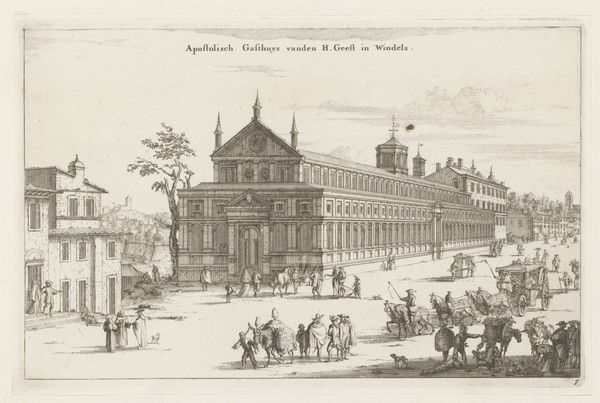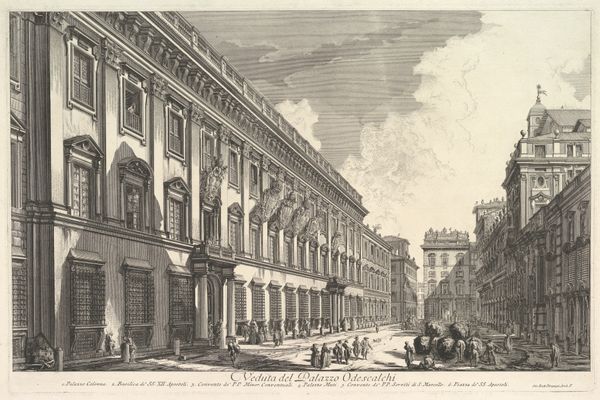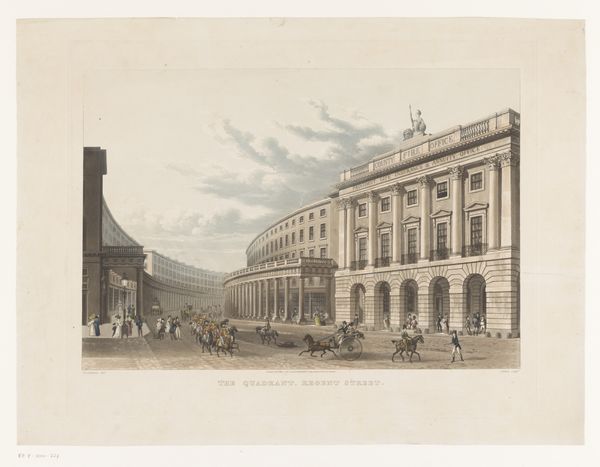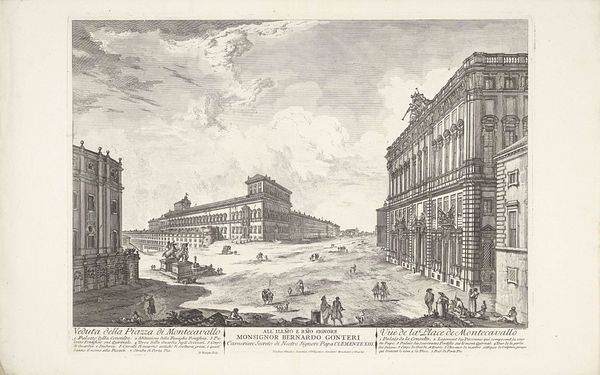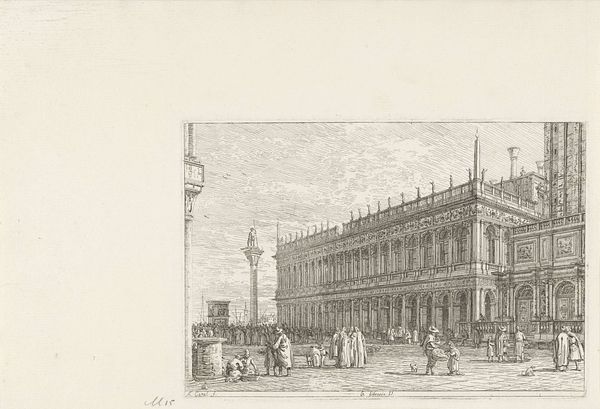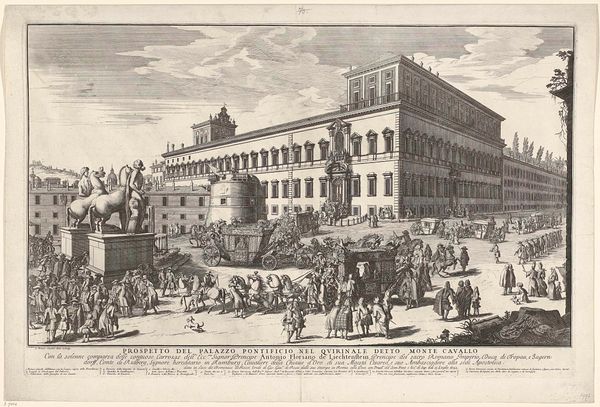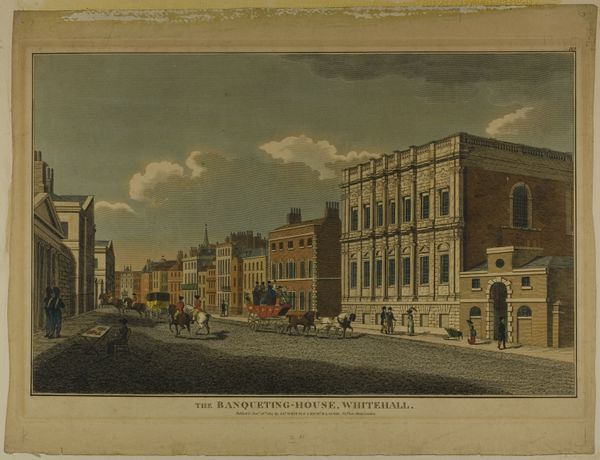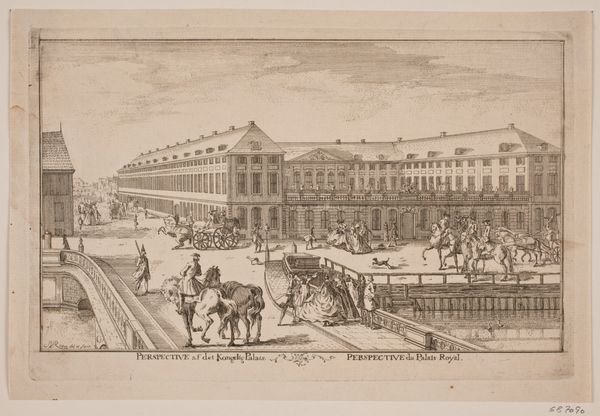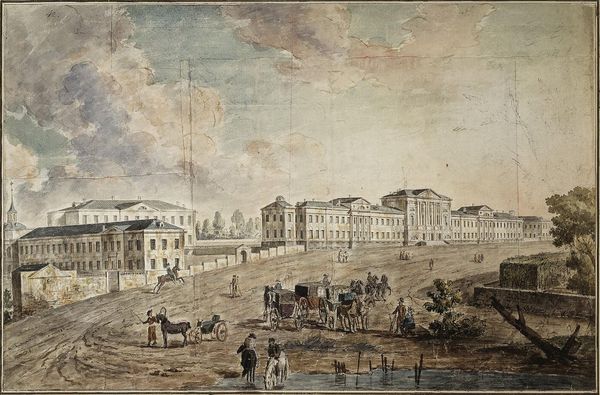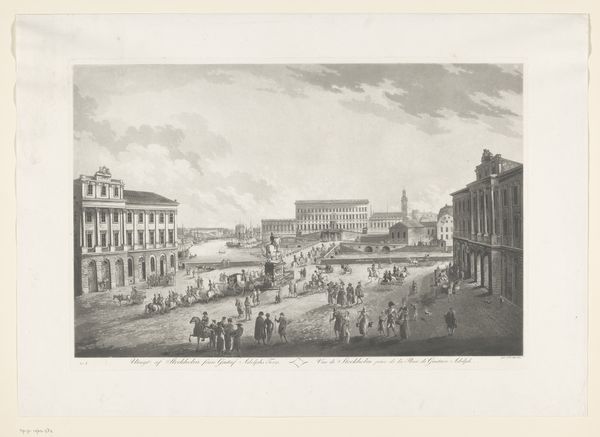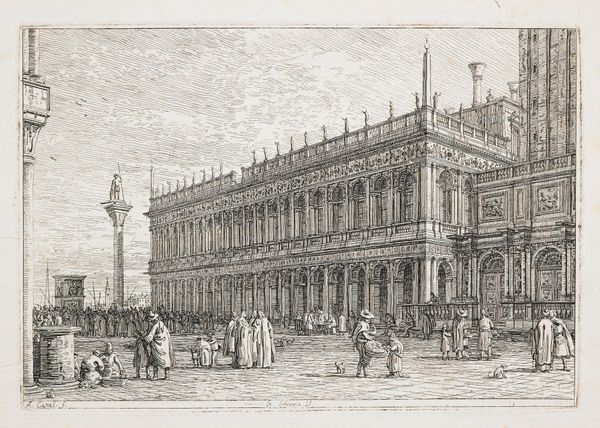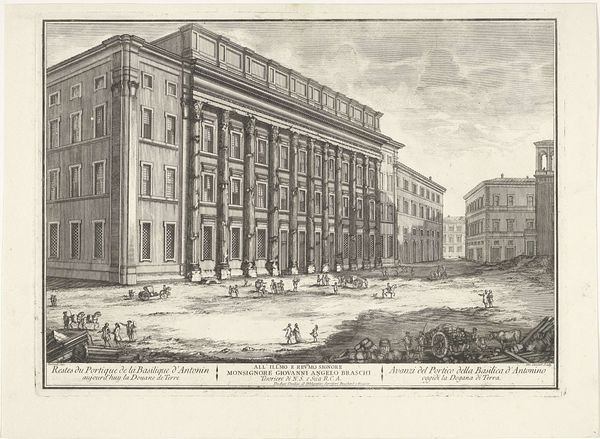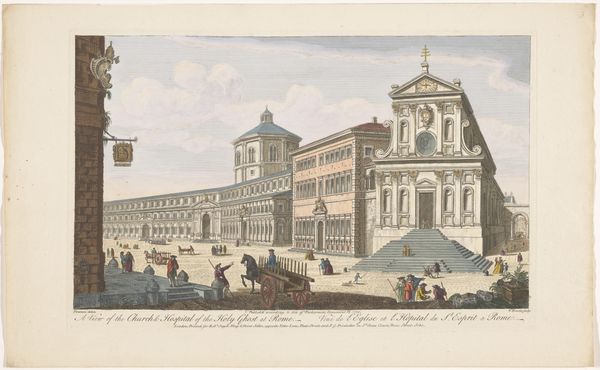
View of the Palazzo del Quirinale, Rome c. 18th century
0:00
0:00
Dimensions: 31.9 x 47.9 cm (12 9/16 x 18 7/8 in.)
Copyright: CC0 1.0
Editor: Here we have Jean-Baptiste Lallemand's "View of the Palazzo del Quirinale, Rome." It's a watercolor and graphite work. The figures seem to be going about their daily lives, and the architecture looms large. What do you see in this piece? Curator: I see a depiction of labor and social hierarchy, subtly embedded in the artistic process. Lallemand's choice of materials – watercolor and graphite – speaks to a particular economy of artistic production and consumption in 18th-century Rome. Consider who would commission and consume such a work, and how that shapes its content and style. Editor: So, it's not just a pretty picture of a palace? Curator: Precisely. The artist is implicated in the social fabric he depicts. The very act of creating and circulating this image reinforces certain power structures. Consider the materiality of the pigments, the source of the paper, the labor involved in its creation, and how all these elements contribute to a broader understanding of the art world within its social context. Editor: That's fascinating. I never considered how the materials themselves tell a story. Curator: Indeed. By examining the means of production, we can gain a richer understanding of the artwork’s place in history and society.
Comments
No comments
Be the first to comment and join the conversation on the ultimate creative platform.
